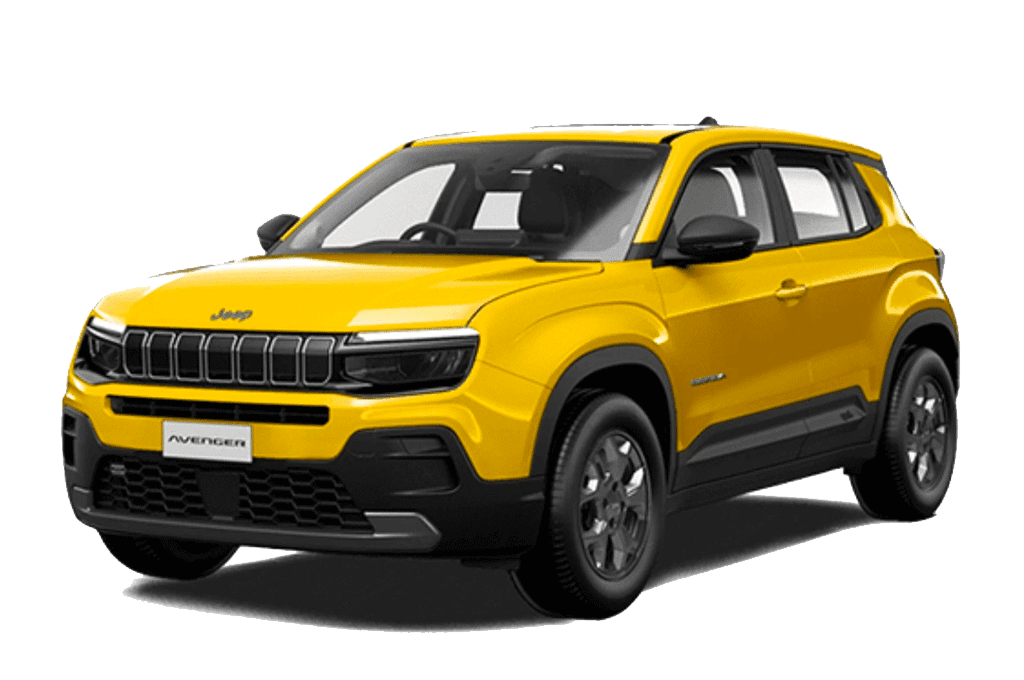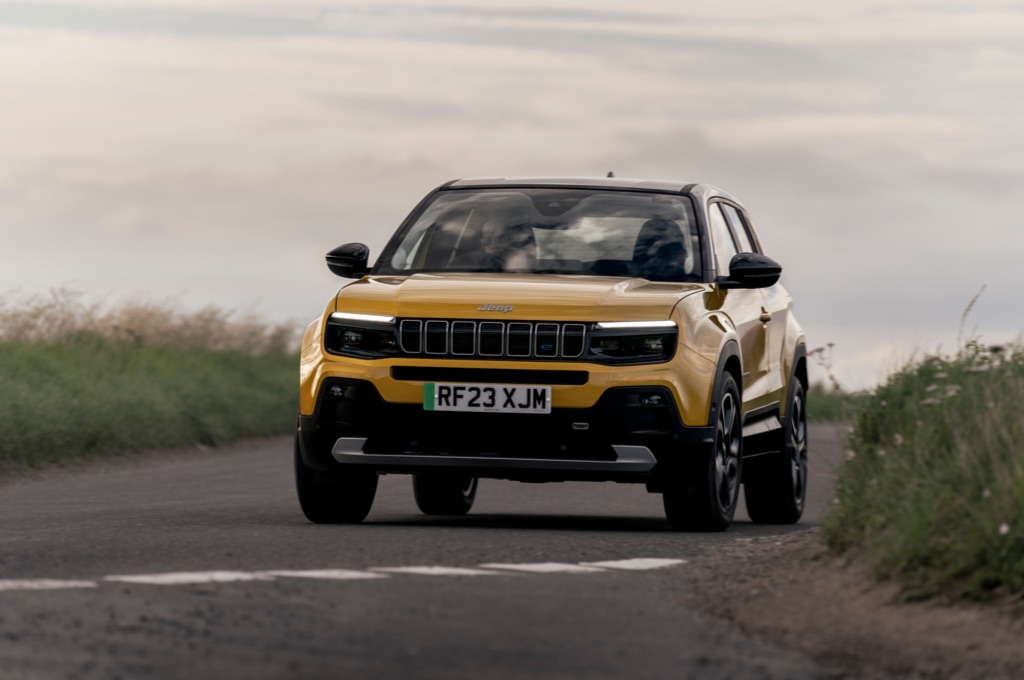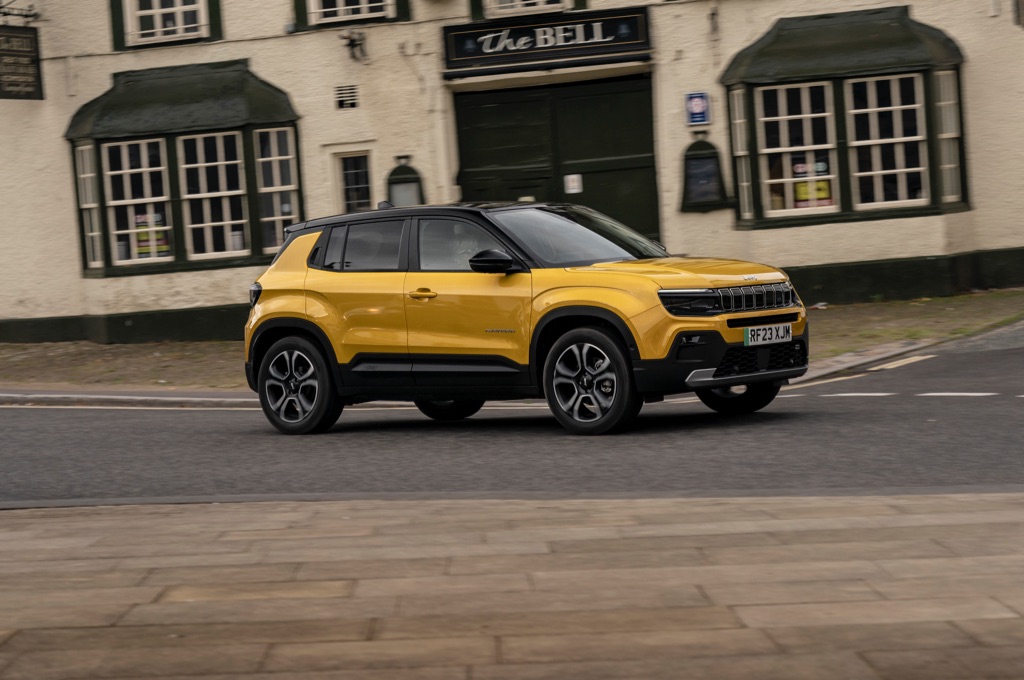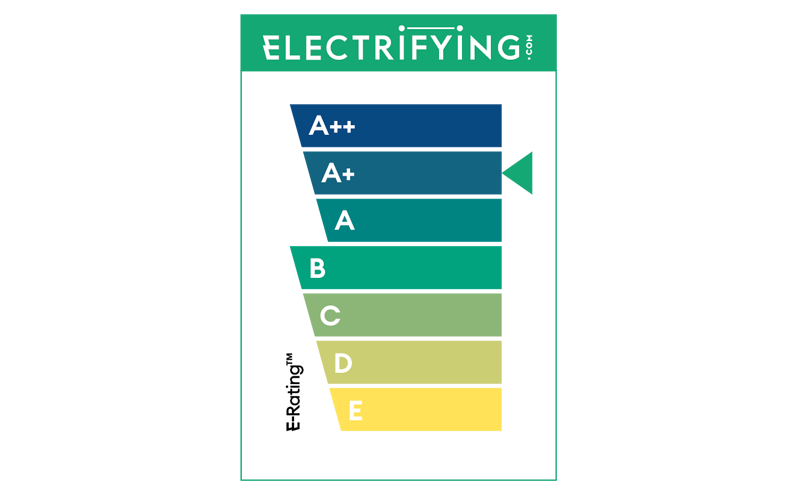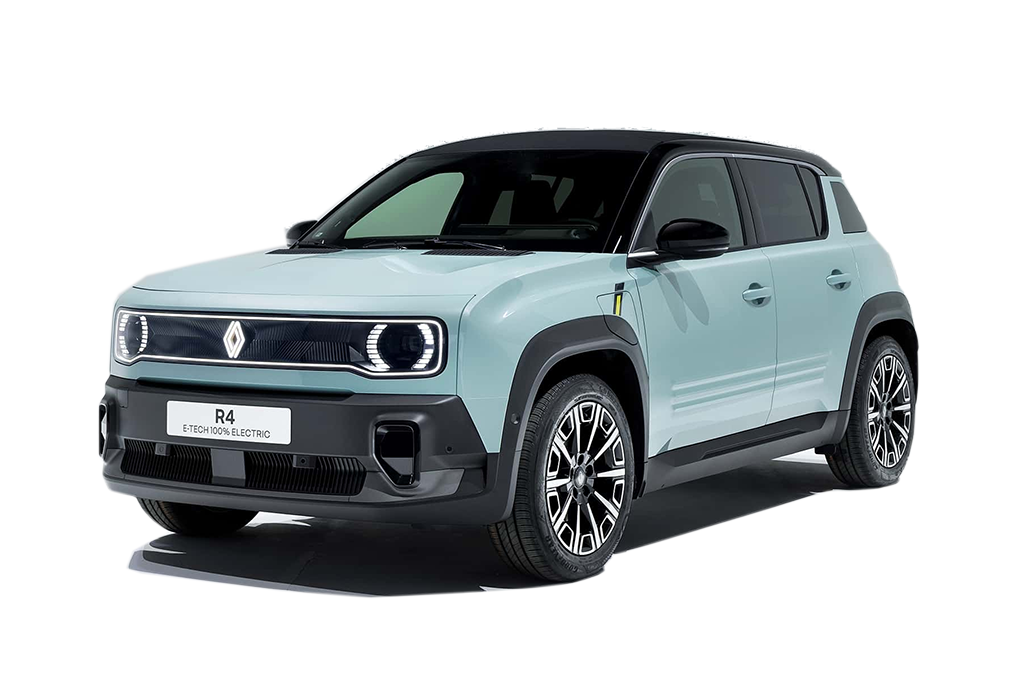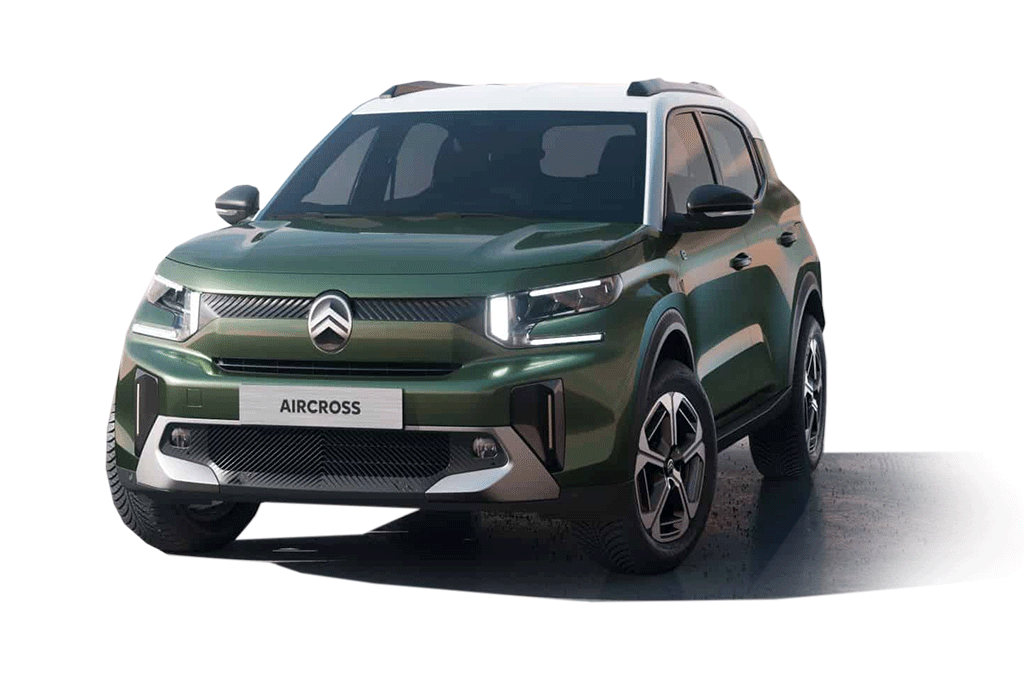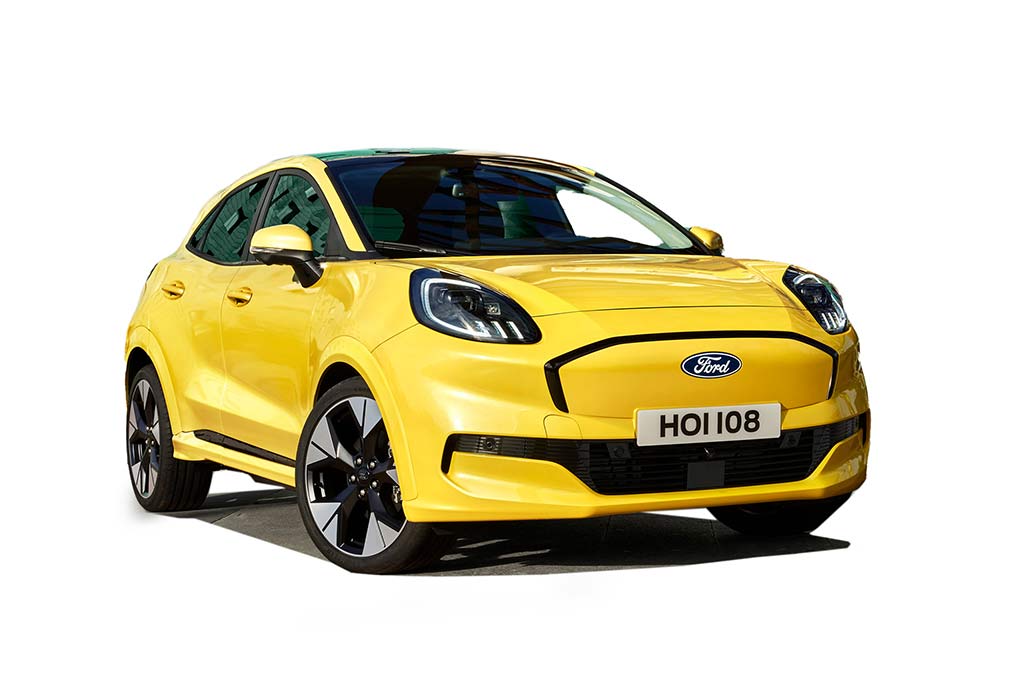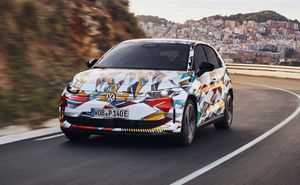Introduction and Model History
The Jeep Avenger was the American brand’s first pure electric car when it was first introduced in 2022. It’s a surprisingly compact car, and at just under 4.1-metres long is only a fraction bigger than a VW Polo. Or, put another way, it’s a similar size to compact electric car rivals like the Renault 4 and Citroen e-C3 Aircross, if a little smaller than the Ford Puma Gen-E. Higher spec versions of the Jeep Avenger also cross into the price range of bigger alternatives like the Skoda Elroq, MGS5 and Kia EV3, which means that it’s got some seriously good competition.

The Avenger Electric is only available with front-wheel drive, a 154bhp electric motor and a 51 kWh usable battery capacity for a WLTP range of up to 249 miles, so it’s a pretty simple lineup where you just choose the equipment level you fancy. However, you can get a hybrid Jeep Avenger 4XE that offers four-wheel drive, as well as mild hybrid and straightforward non-electrified petrol versions.
We’re all about the electric cars here at Electrifying, so we’ll be focussing on the battery-powered Jeep Avenger Electric.
What I will say is that I love the way the Avenger looks. It's dinky yet chunky-looking, which suits the brash Jeep brand, and it's also unmistakably Jeep. Those squared-off wheel arches, the butch-looking black plastic cladding, and the trademark seven-bar grille... You can't miss that it's a Jeep, even though this is actually a fairly small car that's ideal for around town meandering, as well as for longer motorway journeys.
Range, Battery and Charging
The Jeep Avenger gets a lithium-ion NMC battery with a usable capacity of 51 kWh (and total capacity of 54 kWh). That’s good for an official WLTP range of up to 249 miles, which is better than what you’ll get from the Citroen e-C3 Aircross, and very close to the range you get from the Renault 4, Ford Puma Gen-E, and smaller battery versions of the Kia EV3, VW ID.3 and Skoda Elroq.
The battery comes complete with an eight year, 100,000 mile warranty, as you’d expect.
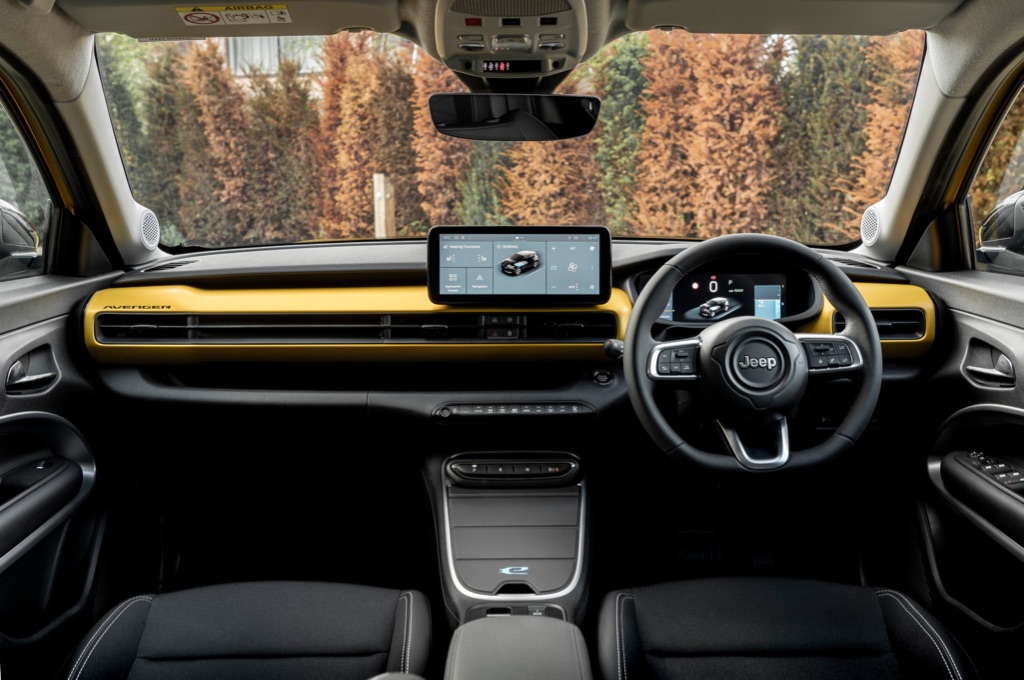
The Avenger was offered with a heat pump as standard for the first couple of years, but a price drop and a change of equipment in 2025 means that a heat pump is now a £500 option. I actually don’t mind that – a heat pump can be very useful but it’s really only if you’re doing big miles in winter conditions that you’ll benefit from it, so I’d rather see lower prices and an affordably-priced option for a heat pump. That suits everyone, and I think Jeep’s right to offer it like that.
On a 90 minute drive on mixed roads in Normal mode, in a car with a heat pump fitted, we averaged 3.9 miles per kWh when the outside temperature was around 9 degC, which is equivalent to a real-world range of 199 miles. On a different, warmer day we saw that efficiency rise to 4.9 miles/kWh, which is a real-world range of almost exactly the same as the claimed range – 249 miles! That makes the Jeep Avenger one of the most efficient small electric cars, although the Ford Puma Gen-E might give it a run for its money on that front.
Charging is via the CCS or Type 2 socket located at the rear of the Avenger, where you’d expect to find the fuel filler cap. These are the standard socket types in Europe and are compatible with every home charger, and with the vast majority of public charging stations, too.
A 100kW maximum charging speed means that you can have a 10-80% charge in under 30 minutes, or a 100 mile top-up will take around 25 minutes. Plug into a 7kW home charger and the Avenger will be fully charged in eight hours (the cable you need to plug into a home charger is provided as standard). The Jeep can accept up to 11kW AC though, which could be handy at some public chargers.
Practicality and Boot Space
The Jeep is surprisingly roomy despite being only 4.08m long; that’s around 10-20cm shorter than most rivals like the Ford Puma Gen-E and Kia EV3.
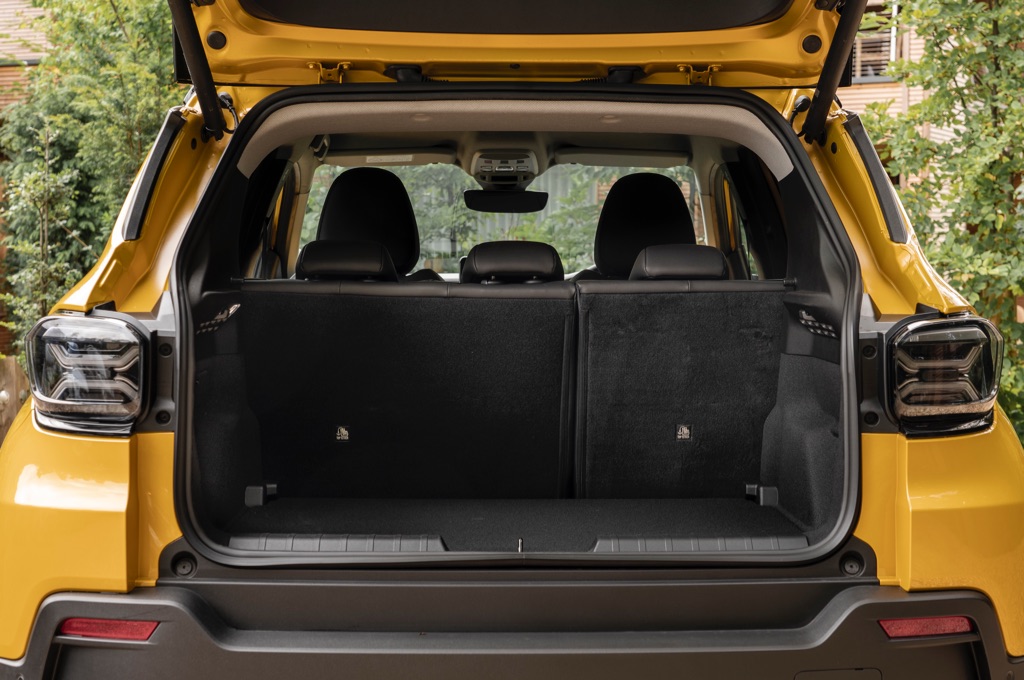
Short as it is, Jeep has managed to find 380-litres of boot space and a bit of underfloor cable storage in there, although there’s no ‘frunk’ storage space under the bonnet. It’s certainly big enough in the boot to take a chunky outdoor buggy, and the boxy shape of the Avenger means there’s good height to the boot space, which is ideal if you’ve got a dog that likes to sit up and stare wistfully out of the rear window.
Space in the back seats is suitable for a small family, but you'll be pushing it with lanky teens. You don’t get a central armrest back there, but there is enough headroom for an average-sized adult to feel comfy even on a longer run, and you get a couple of charging USB-C sockets as well. The seats fold down in a 60/40 split.
There’s plenty of space up front for even a tall driver to find a natural-feeling driving position, and there are loads of storage cubbies around the cabin to stow your stuff away, too. The magnetic, soft-touch plastic lid over the central console, which actually peels back in sections like those used on iPads, is quite a nifty thing and reveals a deep storage area between the front seats.
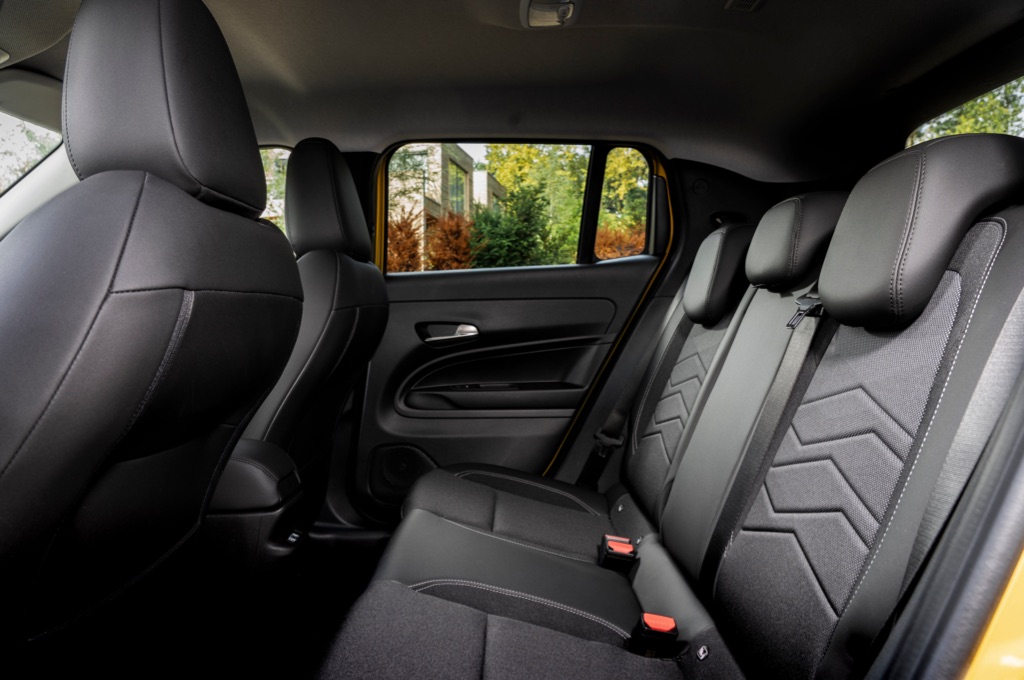
In the 1st Edition there’s also a wireless charging cubby for your phone. Overall, the Jeep Avenger is one of the most practical small cars, although we would have liked some sliding rear seats for even more versatility. If you’re happy to go for a slightly bigger car like the Ford Puma Gen-E, Kia EV3 and Skoda Elroq then you can get usefully more passenger- and boot-space for a similar price to one of the high-spec Jeep Avenger Electric models.
Interior, Design/Styling and Technology
The Avenger’s dash is logical to use, with a simple row of air-con button beneath the standard 10.25-inch touchscreen. It’s not ground-breaking, and the dash in the Renault 4 and Kia EV3 feel a bit classier and more interesting, but the Avenger’s interior is a big step forward over previous Jeeps.
The Jeep's ‘Uconnect’ infotainment system has decent graphics, a physical home button so that you can hop back to the main screen instantly, and you can personalise the home screen widgets to make it easier to get to the features you regularly use.
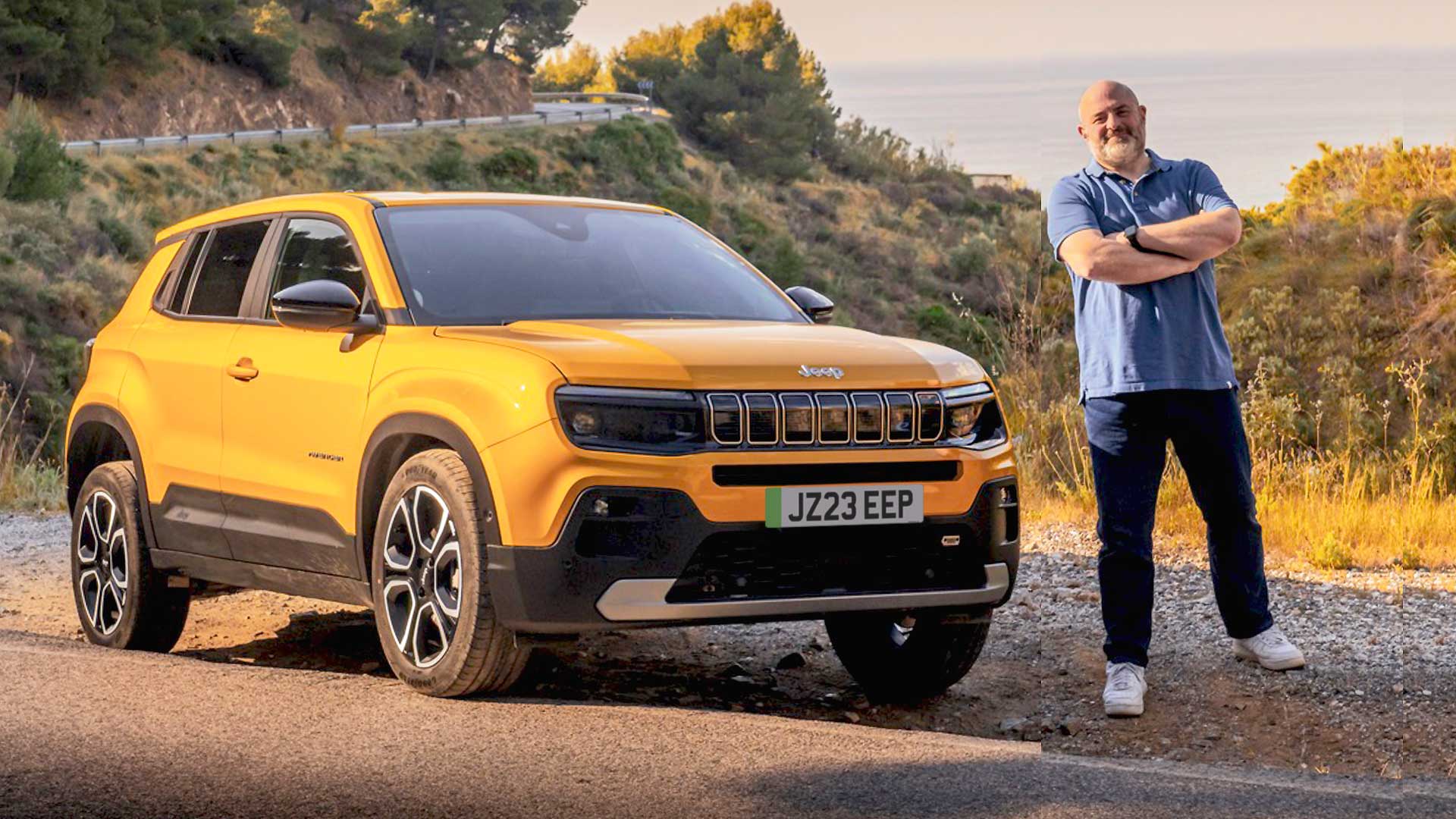
The screen isn’t the quickest to respond but it does do a fine job overall, and you get wireless Apple CarPlay and Android Auto, plus over the air software updates and all the features you want. The entry-level Longitude model doesn’t get in-built nav, but given that you can mirror your phone apps I wouldn’t be too worried about it.
Is the Jeep’s infotainment touchscreen as good as the system in the Renault 4, Kia EV3 and Skoda Elroq? Not really, no. But it’s not far off, and at least it’s now easy to live with, especially as it has shortcuts to turn off your lane-keep assist and speed-limit warnings.
Motors, Performance and Handling
As for how it drives, the Jeep Avenger Electric is a really well-judged little car that feels grown-up enough to cope with long journeys, even if you’ve got the kids on board. The steering is quite light but there’s enough bite to it to give you confidence as you swing through roundabouts and car parks, and Sport mode weights it up nicely for faster country roads. It also feels stable and comfortable on the motorway, so you won’t mind doing longer journeys when necessary.
Even though it ‘only’ does 0-62mph in 9.0sec, which is slower than may alternative electric cars, the Jeep feels fast enough in most situations. Sure, it lacks some of the urgency that you might expect from an electric car - even when in Sport mode, which is the only setting which unleashes the full 154bhp. in Normal you get 107bhp, while Eco restricts you to a wheezy 80bhp, and also restricts the air-con usage.
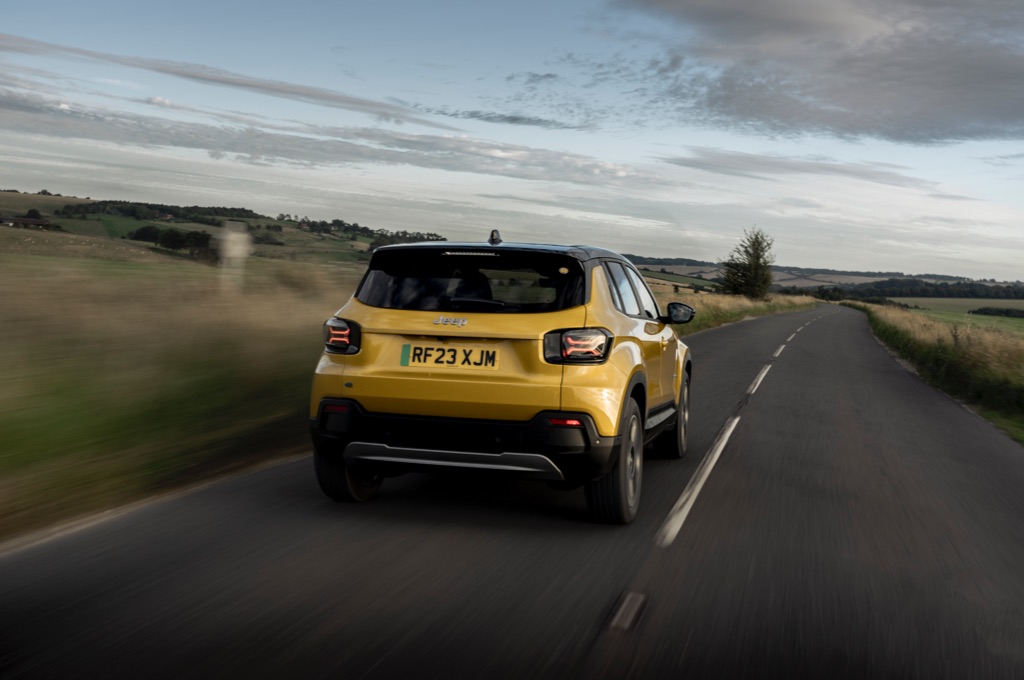
I do find the Eco mode a bit too restrictive for performance, if I’m honest; it just feels too slow when you’re pulling out of junctions. Normal is fine, though, so if you stick to that and Sport mode then you’ll find the Avenger surprisingly good fun, even on nice, fast, sweeping roads.
Despite having a bit more sparkle to the handling than you may expect, the Jeep Avenger is also really comfy. The suspension soaks up all but the worst of the creases and ruts in the road, and there’s very little wheel bounce and suspension noise, so it feels smooth. There is a little more tyre and wind noise than you might expect after stepping out of an ID.3 or Born, but it's not obtrusive.
One noise that might prove more divisive is the indicator noise. It has a two-tone beat which makes it sound like a 1980s synthesiser back beat, which may delight some drivers and… well, might not delight others.
Overall, the Avenger is a very composed and easy-going commuter, as well as a fun little SUV for about-town runs. Even with the newer competition now arriving, the Avenger Electric is one of the best small electric cars when it comes to balance of ride and handling.
Jeep hasn’t forgotten its off-road routes, either, and all Avengers get Selec-Terrain, which lets you choose the off-road surface you’re on so that the car’s electronic systems can be adjusted to make the most of available traction. It’s the best of the small electric cars when it comes to off-road ruggedness, but it is only available with front-wheel drive and it can’t tow anything either, so it’s hardly a true off-roader.
Running Costs and Pricing
The Jeep Avenger was hampered with an optimistically high price when it was first launched, but prices have been dropped in recent years so it now starts from around £30,000 for the entry-level Longitude, which gets air-con, auto lights and wipers and reversing sensors. Mind you, heated seats, adaptive cruise control and traffic sign recognition are all optional, and you can’t add keyless entry at all, so many will choose to go for a higher spec car.
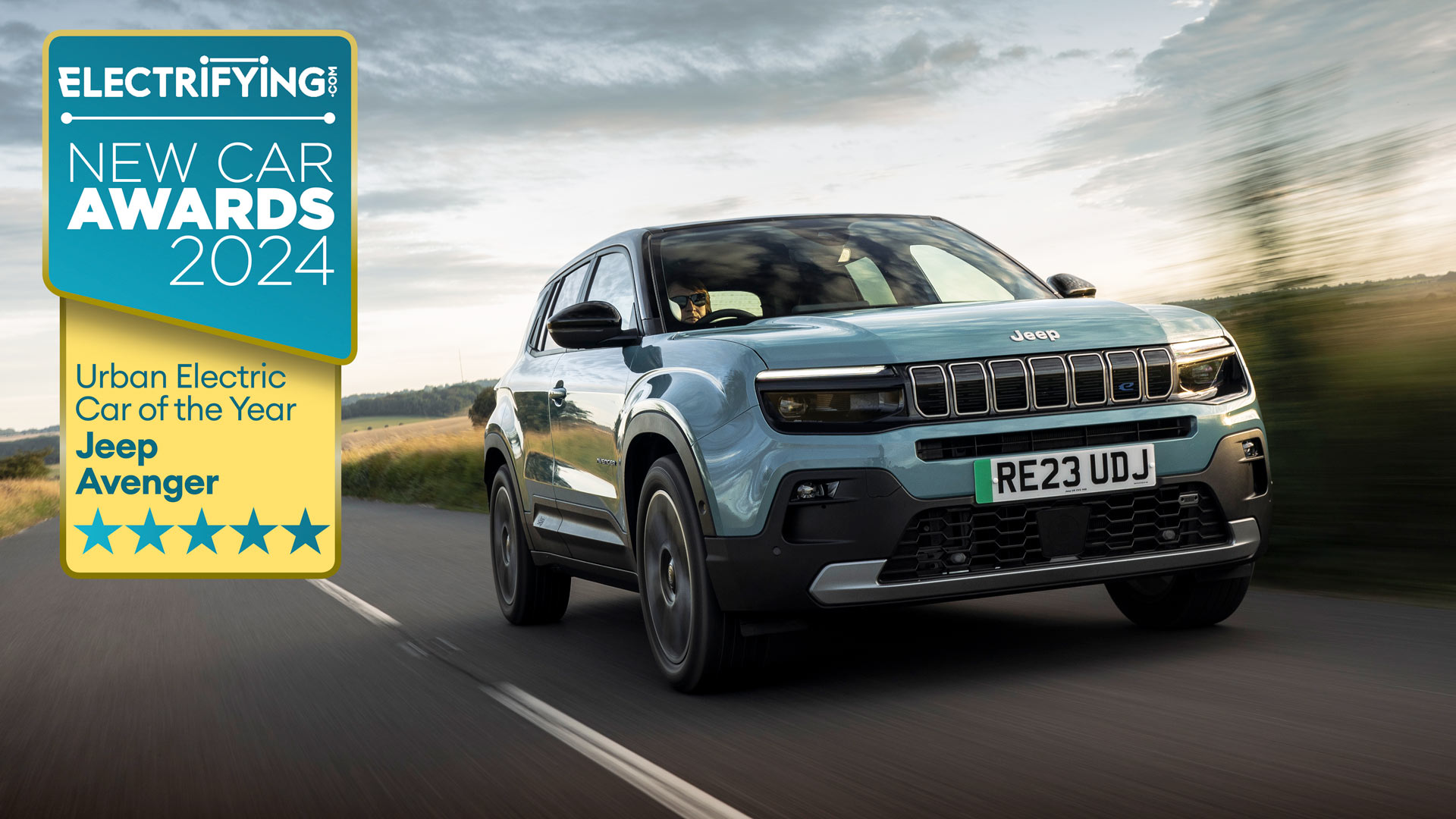
Speaking of which, the mid-spec Avenger Altitude adds style touches, heated side mirrors, adaptive cruise control and a reversing camera, while heated seats and keyless entry are optional. Top-spec Summit adds leather, heated seats, wireless phone charging, blind spot warning, 18-inch alloy wheels and more. You’ll still pay extra for keyless entry, though.
The Jeep Avenger Electric falls into insurance groups 24- to 25, which will make it a fraction cheaper to insure than the Renault 4 or Skoda Elroq, and quite a bit cheaper than the Kia EV3.
Verdict
The Jeep Avenger is a fun yet practical little electric SUV. For balance of comfy ride and balanced handling, Jeep has hit a sweet spot. It’s also practical, efficient and looks great. Yes, it’s got major competition from all kinds of rivals, and I’d say that a Renault 4 is a touch more desirable and definitely has a better infotainment system, while a basic Kia EV3 Air or Skoda Elroq SE will be better all-rounders if you’re after a family car and need the interior space.
But, not everyone needs or wants a bigger car, and the Jeep Avenger Electric is a very likeable and capable compact EV that remains highly recommendable.
Want all the latest electric car news, reviews and videos? Sign up to the Electrifying newsletter, and don't forget to check out the Electrifying podcast.











